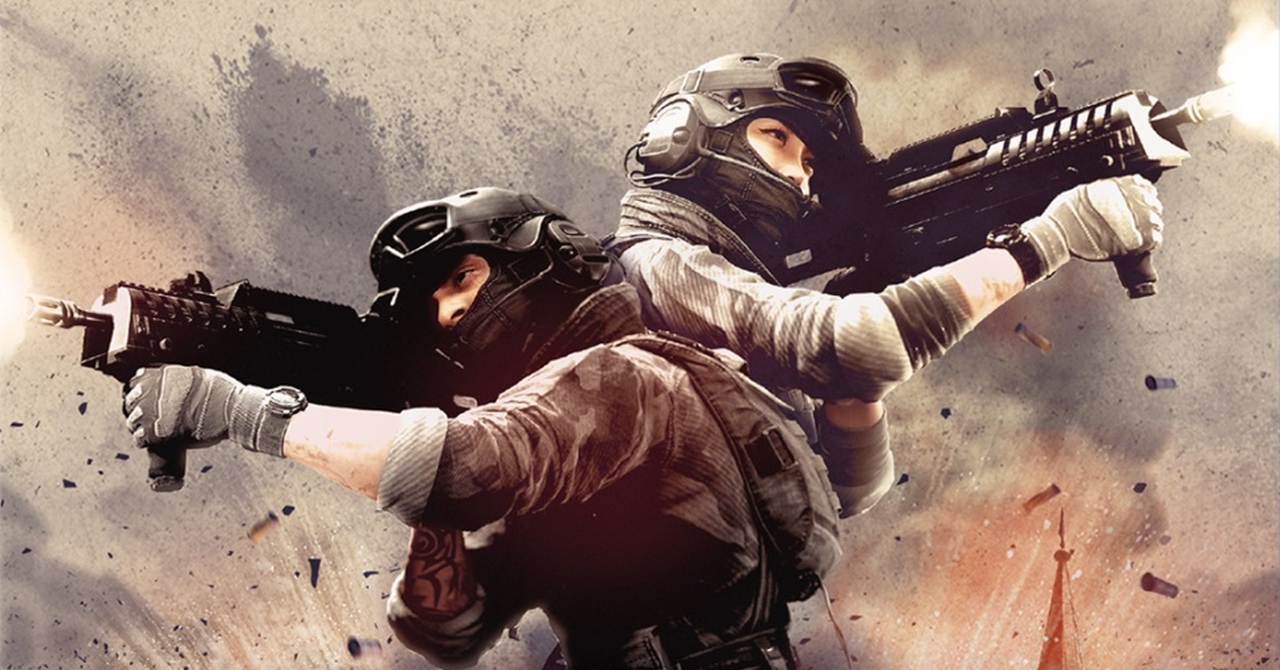Whiskey Tango Foxtrot
Whatever else virtual reality has become in the years since its commercial debut, it’s beyond dispute that it has become, in large measure, the new home of the lightgun genre. For every creative, even transcendent VR experience, there are half a dozen shooting galleries capitalizing on VR’s most easily-realized promise: The visceral thrill of holding a gun and shooting at targets.
Bravo Team is, for better or worse, one of those. Coming from SuperMassive, the game is a modern-day lightgun title aiming to bring a touch of Rainbow Six or Time Crisis to a surprisingly crowded field.
Unfortunately, given what’s on offer, it’s hard to believe that the same studio that produced Until Dawn and Until Dawn: Rush of Blood (one of the better PlayStation VR launch titles) could come up with this.

Bravo Team (PlayStation VR [Reviewed on standard PS4 with PSVR Aim Controller])
Developer: SuperMassive Games
Publisher: Sony Computer Entertainment
Released: March 6, 2018
MSRP: $39.99
Until Dawn and Until Dawn: Rush of Blood were some of the more creative works on the market when they were released. The former was a cool interactive-fiction take on classic slasher-movie tropes – Heavy Rain, but done better – and while the latter was hardly innovative in a broad sense, it at least had a strong central aesthetic and leveraged VR’s sense of presence for a number of good jump-scares, alongside the medium’s trademark rollercoaster feel.
Those games in mind, it’s hard to imagine this same studio could produce something like Bravo Team, which might very well be the most generic, bland shooter I’ve ever played, in or out of VR. Its narrative is low-rent Call of Duty knockoff fodder. Players are members of “Bravo Team”, a group of soldiers caught up in a coup d’etat wracking a fictional eastern European country, the name of which I forgot less than a day after finishing it.
About as memorable is the gameplay. While Bravo Team seems to sell a sort of Rainbow Six-like tactical shooter vibe, movement is almost as restrictive as any ol’ linear lightgun title. Players can only move from cover point to cover point, designated by a handy indicator. Find a desirable chest-high wall or barrel and tap a button, and the game will instantly snap to third-person as the character automatically scuttles over there. Think of the semi-automated “move to cover” function in The Division, only that’s all the movement in the entire game.
It’s clear that this style of movement was designed to limit nausea (a problem I’ve struggled with in my time owning a PSVR), so I can’t be too hard on the game or SuperMassive for making that design choice, but at the same time, I feel less like an elite soldier than like I’m roleplaying an XCOM squaddie, being ordered around by a first-time Commander. Seriously, this mode of node-based movement brought to mind how games figure out pathfinding for NPC enemies, except here, even the players are involved.
The shooting at least works, technically. With the PSVR Aim Controller (the game also supports a standard DualShock 4 tracked via its lightbar), I could order around my AI buddy, aim down sights by bringing the controller up to the headset, and even blind-fire by raising the controller above my eye line. It was functional, but unlike many real lightgun titles, the gunfire felt rather weak. Exacerbating the issue is the fact that, as a cover shooter, Bravo Team‘s enemy NPCs tended to stick behind cover, rather than getting up in one’s face or moving about the way standard light gun enemies do. Much of the game was spent staring down some well-rendered sights at what looked like a balaclava-clad head poking out from a corner or barrier. Lacking the ability to carry multiple weapons also seemed like an unnecessary restriction, considering getting locked into toting a shotgun during a sniper section, due to not seeing a weapon crate, is hardly enjoyable.
I should also note that while I’ve drawn numerous comparisons to Time Crisis and linear lightgun shooters, Bravo Team does allow a certain amount of free movement. Stages are designed as arenas, and players can move to any and all (valid) cover in those arenas, as can the enemies. Some stages also allow for rudimentary stealth, featuring automatic stealth kills that trigger upon entering cover near an unaware foe. The limited freedom of movement means that a given piece of cover isn’t always safe, and one can overextend, even fail, by being downed too far from a buddy’s help. In a better game, this would make for a genuine sense of tactical depth, but in Bravo Team, sadly, it just reminds one of better games one could be playing instead.

As for the Until Dawn pedigree, the game’s only real nod to that sense of narrative agency is the presence of three endings to the main, three-hour campaign. The endings are determined by a rather throwaway selection of paths at a certain point, and I would’ve missed them entirely had the point not been mentioned off-hand by a fellow reviewer. The choices don’t don’t feel adequately flagged in any way, and it’s entirely possible to end the campaign on a down note and think that’s the only conclusion. Of course, one could say that, in this minimal agency, Bravo Team distinguishes itself from the likes of Time Crisis and the endless hordes of VR shooting galleries, and one would be right. Besides the semi-free movement, it’s perhaps the game’s sole unique feature in the otherwise featureless expanse of unmemorable play.
“Expanse” might be a bit generous, though. While it’s hardly unusual for a VR game to be a bit on the short side, a couple of hours and change for the campaign from start to finish (not including a few frustrating sniper-deaths) pushes the limit. On the other hand, I’m happy that it was over quickly, the better to move on to games that I enjoyed. A score attack mode also exists for those who really want to squeeze every bit of blood from a stone.
In the end, the best I could say for Bravo Team is that it existed, seemed to work, did not make me physically ill to play (more than I can say for some categorically better-designed titles, honestly), and was done with before could I grew genuinely resentful. Beyond that, it’s a completely perfunctory title that is otherwise unworthy of the studio producing it.
[This review is based on a retail version of the game provided by the publisher.]





